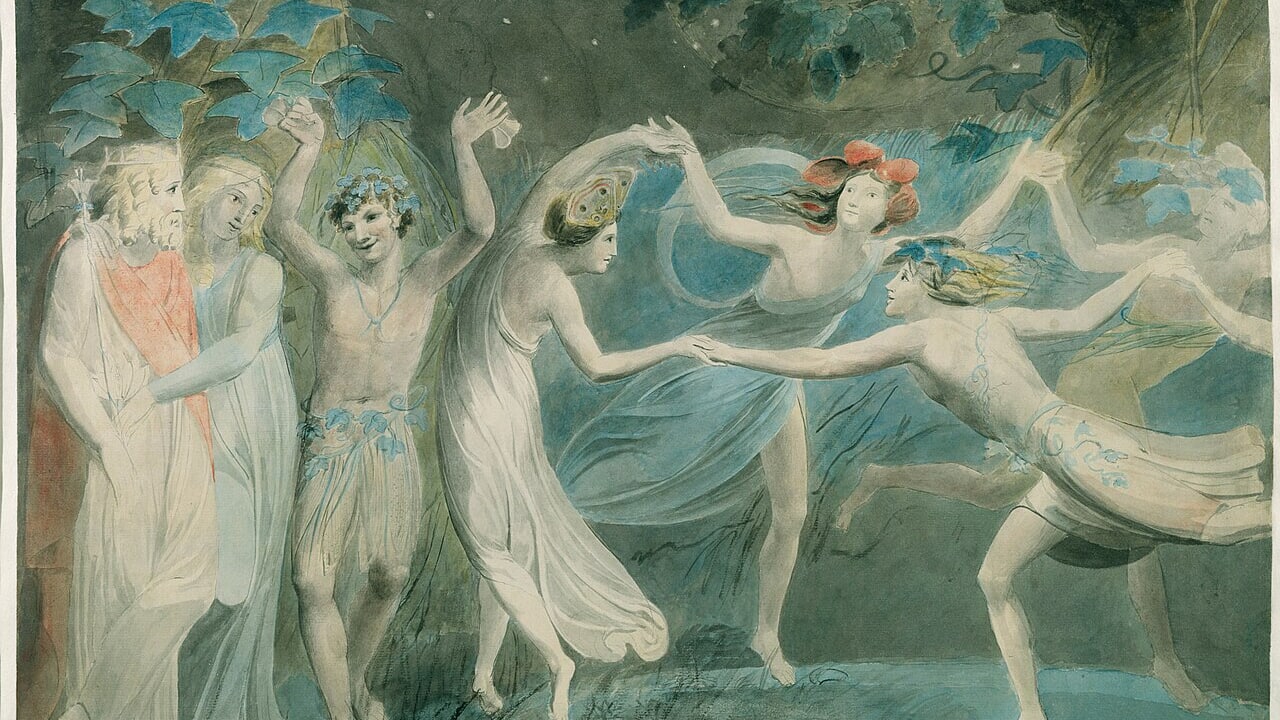As a teenager, Felix Mendelssohn was drawn to the works of Shakespeare, especially the shimmering fairytale magic of A Midsummer Night’s Dream.
After reading a German translation of the comedy, Mendelssohn’s sister Fanny wrote,
We were entwined in “A Midsummer Night’s Dream” and Felix particularly made it his own. He identified with all of the characters. He recreated them, so to speak, every one of them whom Shakespeare produced in the immensity of his genius.
In June of 1826, the 17-year-old Mendelssohn composed a work for two pianos (which he played with his sister) based on A Midsummer Night’s Dream. Quickly, this initial sketch grew into a full concert overture. The English commentator, George Grove, described it as “the greatest marvel of early maturity that the world has ever seen in music.”
The Overture begins with four chords, played by a woodwind choir, which draw us into the magic and mystery of Midsummer Eve. It is a kind of musical “opening of the curtain” which Nikolai Rimsky-Korsakov later echoed in Scheherazade.
Suddenly, E major turns to shadowy E minor, and we are surrounded by the dancing fairies and spirits of the forest. Breathless divided lines in the high strings shimmer, sparkle, and heighten our awareness. The nocturnal stillness is broken as a celebratory theme erupts in the full orchestra. Beginning with a descending scale, this theme quotes the finale of the second act of Carl Maria von Weber’s 1826 opera, Oberon. (Oberon, the mythical king of the fairies, appears throughout Shakespeare’s play). With the quote, Mendelssohn seems to be paying homage to Weber, who died in June of 1826.
Moving from the spirit world to the world of mortals, the Overture’s second subject represents a warm love theme, punctuated by regal fanfares (the royal music of the court of Athens). Finally comes the comic musical “hee-haw” of the braying donkey head of Nick Bottom, the victim of Puck’s mischief, and the sounds of a hunting party. Unfolding in sonata form, the Overture concludes with a final serene statement of the “Weber” theme, which resolves in a tender and reassuring plagal cadence. The curtain falls with a return of the opening chords.
Overture A Midsummer Night’s Dream, Op. 21
Excerpts from Mendelssohn’s Incidental Music
In 1842, during the final years of his brief life, Mendelssohn received a commission from King Frederick William IV of Prussia to write incidental music for A Midsummer Night’s Dream. Let’s listen to three key excerpts from this suite.
The Scherzo, which forms an intermezzo between the play’s first and second acts, evokes the scurrying mischievous fairies and spirits of the woods. Propelled forward with light, off-the-string bow strokes which alternate in speed, this Scherzo is a popular excerpt for orchestra auditions.
Succumbing to Oberon’s magic, the lovers fall into a deep sleep. In the Nocturne, an intermezzo between the third and fourth acts, a noble theme emerges in the solo horn. To my ears, the final moments foreshadow the quirky sounds of nature, as heard in Mahler’s symphonies.
Puck sums up the night’s chaos with the words, “Lord what fools these mortals be!” But with the triumphant Wedding March, a happy ending is at hand.
Listen to the complete incidental music here.
Five Great Recordings
- Mendelssohn: A Midsummer Night’s Dream (complete incidental music), Seiji Ozawa, Boston Symphony Orchestra Amazon
- Ivan Fischer and the Budapest Festival Orchestra
- George Szell and the Cleveland Orchestra
- James Judd and the New Zealand Symphony Orchestra
- Nikolaus Harnoncourt and the Chamber Orchestra of Europe
Featured Image: “Oberon, Titania and Puck with Fairies Dancing. From William Shakespeare’s A Midsummer Night’s Dream” (1786), William Blake

